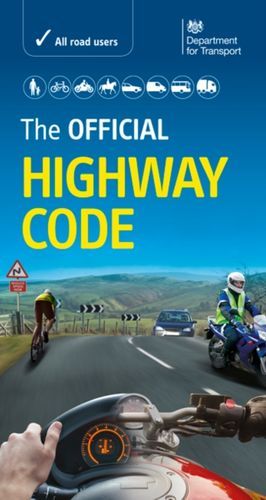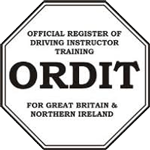What Are The New Highway Code Rules For 2021
What are the new Highway Code rules 2021?
The new version of the Highway Code includes a "hierarchy of road users".
This will ensure that people who can cause the most harm in a collision, such as those in vehicles, bear the "greatest responsibility to reduce the danger they may pose to others".
So, a lorry driver will have a greater responsibility to those driving a car or motorcycle, and likewise, people cycling would have a greater responsibility than pedestrians.
The hierarchy will be, in order of priority: pedestrians; cyclists; horse riders; motorcyclists; cars/taxis; vans/minibuses, with large passenger and heavy goods vehicles at the bottom.
Pedestrians will have priority on pavements and at zebra crossings. A new rule makes clear that at a junction, drivers should give way to pedestrians crossing or waiting to cross a road into which, or out of which, they are turning.
ROAD LAWS
Cyclists will have priority at junctions when travelling straight ahead. And there is also guidance on safe passing distances and speeds. The new Code makes it clear that 20mph speed limits must not be exceeded by drivers. Also: Electric vehicle drivers are advised to park close to charge points and avoid cables creating trip hazards.
Cyclists should give room when passing pedestrians on shared cycle paths.
For motorists who get annoyed with middle-lane hogging on motorways, a tweak to the rules in 2021 says "You should return to the middle lanes and then the left-hand lane when it is safe to do so".
The Code already runs to more than 150 pages with over 300 rules. The aim of the changes is also to improve guidance for drivers using motorways, including what to do during a breakdown or incident.
This follows concern over dozens of fatalities on so-called smart motorways, where there is no hard shoulder or the hard shoulder can be converted to live traffic.
This follows concern over dozens of fatalities on so-called smart motorways, where there is no hard shoulder or the hard shoulder can be converted to live traffic. Here is some of the new, additional or amended text for the Highway Code 2021:
Rule 91 Get sufficient sleep before embarking on a long journey. If you feel sleepy, stop in a safe place. Do not stop in an emergency area or on the hard shoulder of a motorway.
Rule 97 Before setting off. You MUST ensure that you have a valid licence and insurance to drive the vehicle you intend to use.
You SHOULD ensure that: You have planned your route and allowed sufficient time for breaks and possible delays. You have sufficient fuel or charge for your journey, especially if it includes motorway driving. It is recommended for emergency use that, you have a mobile telephone containing emergency contacts (e.g. breakdown assistance), and have high-visibility clothing.
Rule 124 A speed limit of 30mph (48km/h) generally applies to all roads with street lights (excluding motorways) unless signs show otherwise.
Rule 126 Stopping Distances: Allow at least a two-second gap between you and the vehicle in front on high-speed roads and in tunnels where visibility is reduced.
The gap should be at least doubled on wet roads and up to ten times greater on icy roads. Tailgating is where the gap between you and the vehicle in front is too small for you to be able to stop safely if the vehicle in front suddenly brakes.
Tailgating is dangerous, and intimidating and can cause collisions, especially when driving at speed. Keeping a safe distance from the vehicle in front gives you time to react and stop if necessary. Dangerous and careless driving offences, such as tailgating, are enforced by the police.
Rule 138 On a dual carriageway with three or more lanes, you may use the middle lanes or the righthand lane to overtake but you should return to the middle lanes and then the left-hand lane when it is safe to do so.
Rule 234 Before entering the fog, check your mirrors, then slow down. If ‘Fog’ is shown on a sign but the road is clear, be prepared for a bank of fog or drifting patchy fog ahead.
Rule 230 You MUST NOT stop or park on: The carriageway, an emergency area or a hard shoulder of a motorway except in an emergency.
A pedestrian crossing, including the area marked by the zig-zag lines. Clearway; taxi bays; cycle track A tram or cycle lane during its period of operation.
Roads marked with double white lines, even when a broken white line is on your side of the road, except to pick up or set down passengers, or to load or unload goods. An urban clearway within its hours of operation, except to pick up or set down passengers. Red lines... unless otherwise indicated by signs.
Any vehicle may enter a bus lane to stop, load or unload where this is not prohibited.
Rule 253 Provisional car licence holders MUST NOT drive on the motorway unless they are accompanied by a DVSA Approved Driving Instructor (ADI) and are driving a car displaying red L plates (or D plates in Wales) with dual controls. Prohibited vehicles.
Motorways MUST NOT be used by pedestrians, holders of provisional motorcycle licences, riders of motorcycles under 50 cc (4kW), cyclists, horse riders, certain slow-moving vehicles and those carrying oversized loads (except by special permission), agricultural vehicles, and powered wheelchairs/powered mobility scooters.
Rule 257 Amber flashing lights. These signals warn of a hazard ahead. You should: Reduce your speed and be prepared for the hazard. Only increase your speed when you pass a signal that is not flashing, or a sign displaying a national speed limit or the word ‘END’, and you are sure it is safe to do so.
Rule 258 Red flashing light signals and a red ‘X’ on a sign identify a closed lane in which people, stopped vehicles or other hazards are present.
You MUST follow the instructions on signs in advance of a closed lane to move safely to an open lane. MUST NOT drive in a closed lane. Where the left lane is closed at an exit slip road, this means that the exit cannot be used. Rule 261You MUST NOT exceed a speed limit displayed within a red circle on a sign.
Rule 263 Unless directed to do so by a police or traffic officer, you MUST NOT: Reverse along any part of a motorway, including slip roads, hard shoulders and emergency areas.
Rule 264 Keep in the left lane unless overtaking. If you are overtaking, you should return to the left lane when it is safe to do so.
Rule 266 Approaching a junction. Look well ahead for signals, signs and road markings.
Rule 269 Hard shoulder (where present). You MUST NOT use a hard shoulder except in an emergency or if directed to do so by the police, traffic officers or a traffic sign. Hard shoulder (where used as an extra lane).
The hard shoulder is used as an extra lane on some motorways during periods of congestion. A red ‘X’ or blank sign above the hard shoulder means that you MUST NOT use the hard shoulder except in an emergency.
You can only use the hard shoulder as an extra lane when a speed limit is shown above the hard shoulder. Where the hard shoulder is being used as an extra lane, emergency areas are provided for use in an emergency.
Rule 270 Emergency areas are located along motorways with no hard shoulder or where the hard shoulder can be used as an extra lane (see Rule 269) and MUST only be used in an emergency. They are marked by blue signs with an orange SOS telephone symbol and may have orange surfacing.
Rule 271 You MUST NOT stop on any carriageway, emergency area, hard shoulder, slip road, central reservation or verge except in an emergency, or when told to do so by the police, traffic officers, an emergency sign or by red flashing light signals. Do not stop on any part of a motorway to make or receive mobile telephone calls, except in an emergency.
Rule 275 (NEW RULE) If you need to stop your vehicle in the event of a breakdown or incident, try to stop in a place of relative safety...
where you, your passengers and your vehicle are less likely to be at risk from moving traffic.
The safest place to stop is a location which is designed for parking.
On motorways and other high-speed roads, the safest place to stop is a service area. Other places of relative safety include lay-bys; emergency areas; and hard shoulders. Be aware that hard shoulders provide less protection than other places of relative safety because they are so close to high-speed traffic.
You and your passengers should, where possible, keep well away from your vehicle and moving traffic.
Otherwise moving traffic could collide with your vehicle, forcing it into you and your passengers. Also, exit your vehicle by the side furthest from traffic: Put on high-visibility clothing if you have it. Get behind a safety barrier where there is one. DO NOT stand in a place where your vehicle could be forced into you if moving traffic collides with it.
DO NOT return to your vehicle even if it’s raining, cold or dark. Remain alert and aware of vehicles or debris coming towards you. DO NOT place a warning triangle on the carriageway. Animals MUST be kept in the vehicle or, in an emergency, under control on the verge.
Rule 283 If you are involved in an incident or collision or stop to give help: If possible, stop in a place of relative safety. Ask drivers and passengers to stop smoking.
Contact the emergency services on 999. DO NOT move injured people from their vehicles unless they are in immediate danger. DO NOT remove a motorcyclist’s helmet unless it is essential and you are trained to do so. Be prepared to exchange details.
Stephen Edwards, interim chief executive at Living Streets, said: "The Highway Code currently treats children walking to school and lorry drivers as if they are equally responsible for their own or other people's safety. "These changes will redress that balance."Road users who have the potential to cause the greatest harm should take the greatest share of responsibility to reduce the danger they pose.


